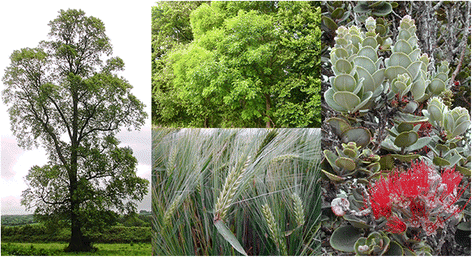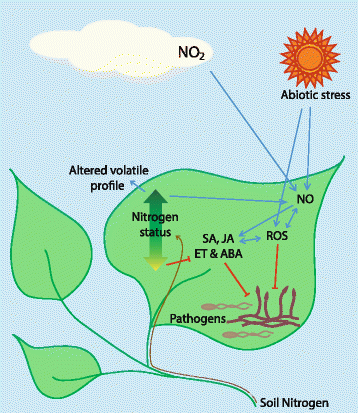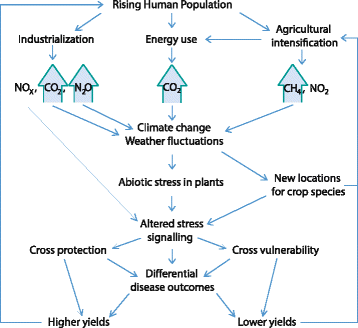NOXious gases and the unpredictability of emerging plant pathogens under climate change
- PMID: 28482888
- PMCID: PMC5422967
- DOI: 10.1186/s12915-017-0376-4
NOXious gases and the unpredictability of emerging plant pathogens under climate change
Abstract
Emerging pathogens of crops threaten food security and are increasingly problematic due to intensive agriculture and high volumes of trade and transport in plants and plant products. The ability to predict pathogen risk to agricultural regions would therefore be valuable. However, predictions are complicated by multi-faceted relationships between crops, their pathogens, and climate change. Climate change is related to industrialization, which has brought not only a rise in greenhouse gas emissions but also an increase in other atmospheric pollutants. Here, we consider the implications of rising levels of reactive nitrogen gases and their manifold interactions with crops and crop diseases.
Figures



References
-
- Subbarao KV, Sundin GW, Klosterman SJ. Focus issue articles on emerging and re-emerging plant diseases. Phytopathol. 2015;105(7):852–4. doi: 10.1094/PHYTO-105-7-0001. - DOI
Publication types
MeSH terms
Substances
LinkOut - more resources
Full Text Sources
Other Literature Sources
Medical

